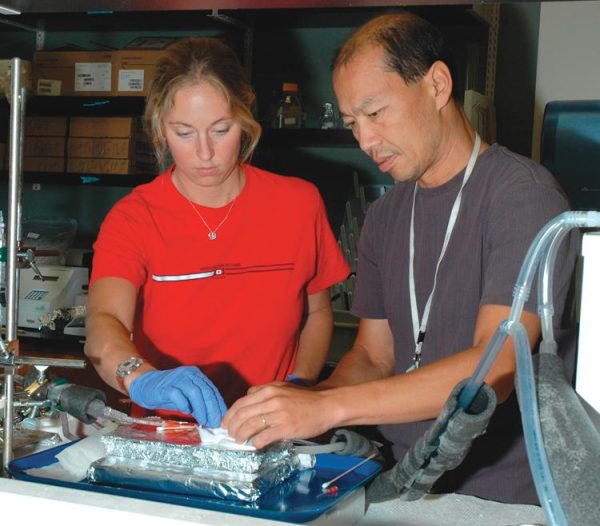HepatoSys Inc. Takes Research to Application

With the goal of developing laboratory research into clinical applications, two UNC Charlotte researchers formed HepatoSys Inc. in 2005.
The spin-off company was started by Dr. Charles Lee of Mechanical Engineering and Dr. Mark Clemens of Biology. The primary focus of their company, which now employs four technicians, is the recovery of organs for transplant.
“We had a very productive collaboration going,” Dr. Clemens said, “and the research developed to the point where we realized if the technology was ever going to be available for patient use, it had to be developed by a private enterprise. So, we took the next step and formed the company.”
Since its inception, HepatoSys has won $1.8 million in grants from the National Institutes of Health. The translational research funding is specifically aimed at taking research from the from bench top to clinical use.
“Our primary research is that we have discovered a way to revive and resuscitate organs from marginal donors,” Dr. Lee said. “This category of marginal donor organs is known as donation after cardiac arrest. We have shown we can recover such organs using low temperature machine perfusion.”
In machine perfusion, a liquid solution developed by the UNC Charlotte researchers is pumped through the donated organ. By using this technique, it is estimated the pool of useable organs for transplant could be increased 20 to 40 percent.
“Currently, an organ can’t be used after the donor has been dead more than 20 minutes,” Dr. Lee said. “We have extended that to an hour in an animal transplant model.”
An important aspect of the research is assessing the viability of the machine perfusion organs. An assessment microscopy system that can evaluate organ function is being built to do just that.
“We’re developing an optical technique that can monitor the recovery of tissue metabolism in the organs,” Dr. Clemens said. “The device is noninvasive and functions at low temperatures. It provides us with continual readout of metabolic recovery to see if the organ is viable.”